
scrounge: /skrounj/ informal verb: to actively seek [books] from any available source
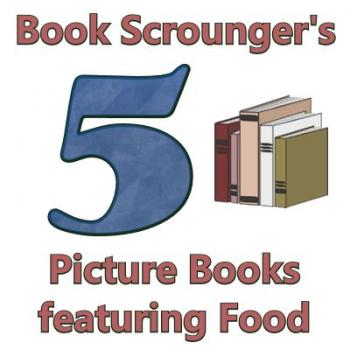
Food is a relatable topic that we often encounter in picture books -- sometimes it's viewed practically, other times in a silly way, or both. There are plenty more that could be included here, but these are some of our favorites:
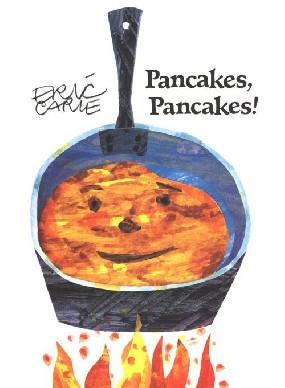
Pancakes Pancakes! is an Eric Carle book I didn't encounter until I was an adult, but I enjoyed it and the kids did too. It takes a fairly "practical" look at how pancakes are made. If you can suspend enough disbelief to allow that a boy named Jack and his mother just happened to be out of every single pancake ingredient, then it makes sense that before he can have pancakes for breakfast, Jack must take wheat to the mill to be ground into flour, milk the cow, churn some butter, fetch an egg, etc. Once he collects everything, his mother walks him through the process of combining the ingredients and cooking his first pancake. It usually succeeds in making me feel hungry by the end!
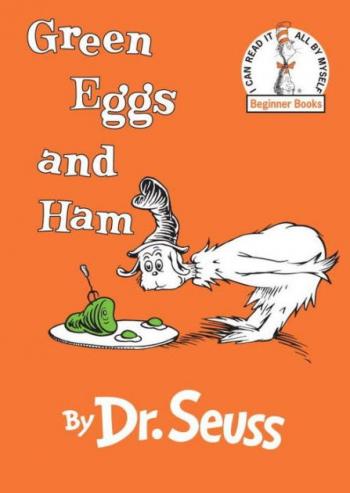
I'll admit, Green Eggs and Ham is not one of my favorite Dr. Seuss books, but it's a classic, and I'm pretty sure all the kids I've read it to have enjoyed it. Perhaps the repetition has gotten to me over the years. But I can appreciate that it encourages kids to try something before outrightly declaring that they do not like it. Either that or it encourages pestering someone to the point of insanity if they won't do what you want them to do -- decide for yourself.
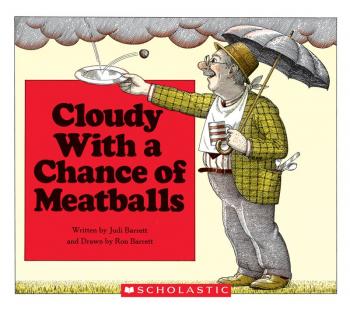
Cloudy with a Chance of Meatballs, by Judi Barrett and Ronald Barrett, is one of my favorite "tall tale" picture books ever. It's the legend of a town called Chewandswallow, where food falls from the sky. This allows for endless possibilities of weird weather, and also some interesting problems and other effects that would go along with this kind of phenomenon. Eventually, the food-weather gets weirder and larger, making life unsustainable for the brave inhabitants, and they are forced to flee. This is the best kind of picture book because the general idea can spur your creativity long after reading it -- what other kinds of food can we imagine falling from the sky? And what kinds of possibilities and problems would that lead to?
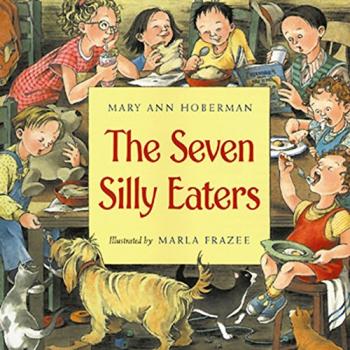
The Seven Silly Eaters is a clever story written in polished rhyme by Mary Ann Hoberman, which tells the story of a growing family of picky eaters -- each child has one particular food that they have to eat in a certain way in order to be happy. Fortunately, it's silly enough that it's easy to overlook real-world consequences of such things and to enjoy the way that the family and story both grow -- until finally, when their long-suffering mother is worn to the bone, the children accidentally invent a dish that makes life a whole lot easier for all of them. Full review here.
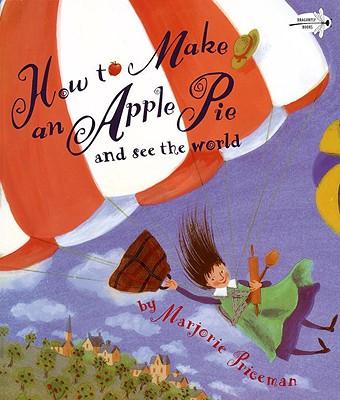
How to Make an Apple Pie and See the World takes a similar approach to Pancakes Pancakes! above, in the sense that all ingredients for the dish in question must be acquired from their sources, but this time it's done in a much more fantastical way. This book is written from a second-person point of view, which is fairly rare (the only other in this style that comes to mind at the moment is How to Dig a Hole to the Other Side of the World which is more educational but a bit fantastical too). In this book, you are instructed to go to the market to get ingredients for your pie, but if the market is closed, then you must jet off to Sri Lanka (to get cinnamon from the bark of a kurundu tree), England, Italy, Vermont, etc. to find only the best ingredients to make into an apple pie. It's a fun read, and at the very end there is a recipe to make your own apple pie.
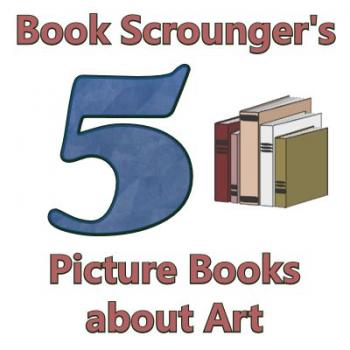
Since the artwork can make or break a picture book, they can be a great way to introduce children to artistic concepts, as well as the joy of making art in the first place. Some of these books do that, and others focus on specific artists, but all help to bring art into a child's world and encourage experimentation.
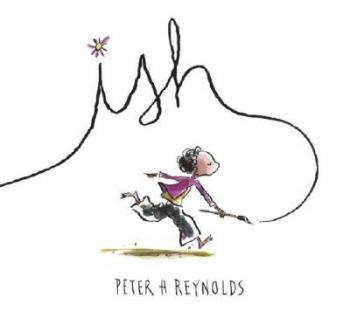
1. Ish, by Peter Reynolds, is the story of a boy named Ramon who likes to draw -- until someone laughs at his artwork, and he suddenly realizes that nothing he draws looks exactly like it's "supposed" to. This is such a good topic to cover in a children's book because many children go through a stage where they begin to realize that their way of seeing the world is changing, and many abandon art at about that time. With some help, Ramon recovers his desire to create, realizing that "ish" is a better goal than "exact." Full review here.
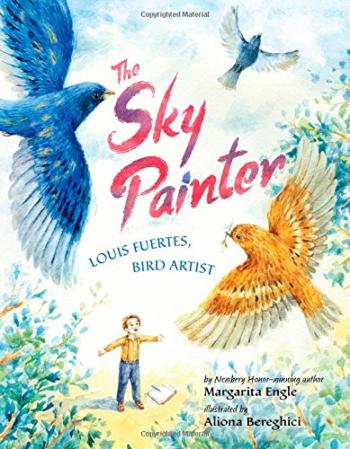
2. One of my favorite picture books in recent years is The Sky Painter by Margarita Engle. It tells the story of Louis Fuertes, a boy who was interested in birds and art from a young age, and found a way to combine his interests in the field of bird art. Not only did he produce a lot of art and go on expeditions all over the world, but he also learned to paint quickly instead of shooting birds with a gun and posing them. Full review here.
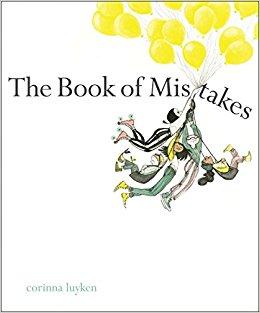
3. A unique book which actually points out some "mistakes" in the illustrations as well as the way they were dealth with, The Book of Mistakes (by Corinna Luyken) combines lovely pastels mixed with black, white, and gray to create a narrative that "zooms" out bit by bit on a bunch of interesting-looking characters in their treehouse. It really encourages us to remember that we all make mistakes, but that they can help us to grow.
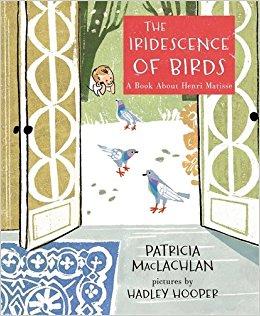
4. The Iridescence of Birds is a poetic tribute to artist Henri Matisse by Patricia MacLachlan. The artwork in this book is especially lovely and incorporates elements from some of Matisse's more iconic images. While the book doesn't share major details of Matisse's life, the vignettes are enough to give us an glimpse of some of the reasons for why he painted what he did.
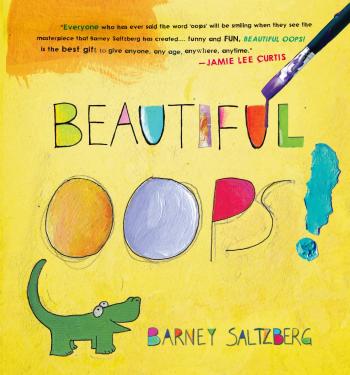
5. This is a fun one. Beautiful Oops!, by Barney Saltzberg, helps encourage kids to see their mistakes as opportunities by demonstrating it with torn paper, coffee stains, drips, smudges, and even crumpled paper. The illustrations are mixed media and very vibrant, and there are fun flaps to open to see the "before" and "after" of the possibilities. Full review here.
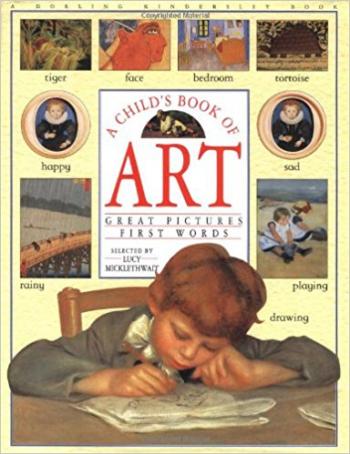
Bonus: For a fun and simple (though very tall) book to introduce children to art history, A Child's Book of Art by Lucy Micklethwait is a great choice. Paintings are organized around simple themes that would be familiar to young children: family, animals, seasons, as well as various places and means of transportation.
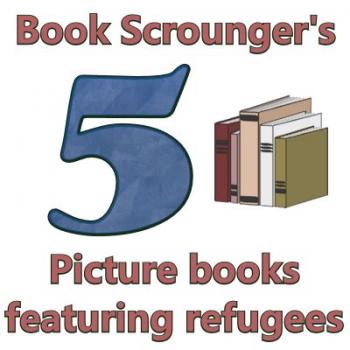
The topic of refugees is more important than ever. On World Refugee Day in 2017, the American Red Cross said that "there are more people displaced from their homes now than at any other point in recorded history." More than half of these many millions of refugees in the world are children. While the idea of millions of children being forced to flee their homes may not feel like a pleasant topic to bring up with children, it is also necessary to learn why and how to stand up for these vulnerable and valuable individuals. Here are some picture books that can help get that conversation started.
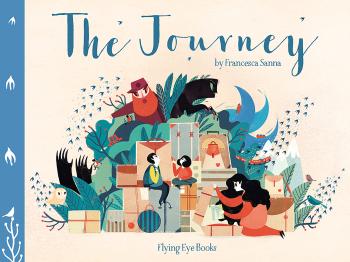
1. The Journey, by Francesca Sanna, was published in 2016. It's a beautifully illustrated story of a family that is forced to flee their home because of war. The story strives to be "neutral" in the sense of not portraying any particular region or ethnicity of the world, so while it is apropos to the current Syrian refugee crisis, it could be applicable to many other situations as well. There is also a fair amount of "allegory" in the story -- the guards are portrayed as giants, and "war" is simply visualized as dark hands reaching out to get the family. This mix of fantasy and reality may help children to visualize topics that would otherwise be too difficult, while also allowing parents/teachers to fill in information if they feel it's appropriate. The story may feel bleak, and while it isn't all tied up in a neat little bow at the end (which makes sense), the refugees look to the sky and see birds migrating, and this helps to give them hope that someday they will be safe and belong somewhere again.
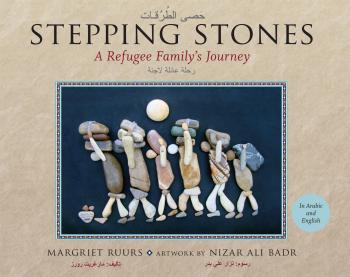
2. Stepping Stones is a uniquely illustrated book -- its images are stone art created by Syrian artist Nizar Ali Badr. While he has remained in his country, he says his heart is with the refugees who have fled. The text includes an Arabic translation of the English, so while the book obviously has ties to Syria and the Middle East, it still tells a story of fear, loss, and hope -- a refugee journey that has also happened in many places outside this context. It is amazing how simple "found" objects from the outdoors can be used to evoke such feeling. Full review here.
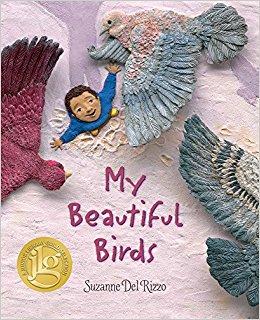
3. Unlike the previous books on this list, My Beautiful Birds specifically takes place in Syria. It tells the story of a boy who had to leave his pet birds behind when his family fled from violence. While his family adjusts to life in the refugee camp they end up in, he struggles and he misses his birds. But at the same time, he finds that birds can also help him to heal. This book is also uniquely illustrated, with images made from clay rather than painted or drawn. Like in The Journey, birds are used to symbolize hope and freedom.
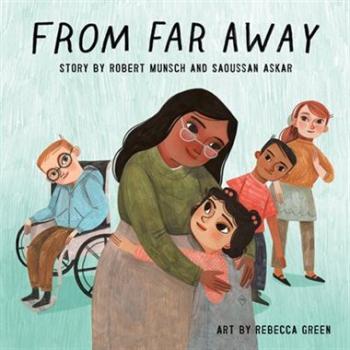
4. From Far Away is a refugee story that goes beyond the story of leaving one home and finding another. It focuses primarily on what happens after -- the period of adjustment during which a young girl named Saoussan has to learn how to live in Canada after fleeing violence in Lebanon. She wants to belong, but everything is so strange and she doesn't understand the context of many things (such as Halloween decorations) or the unspoken social expectations that are unfamiliar to her. This is her story, told in first person (and aided by Robert Munsch), of how she learned to adjust to a new life at school with new teachers and classmates. Full review here.
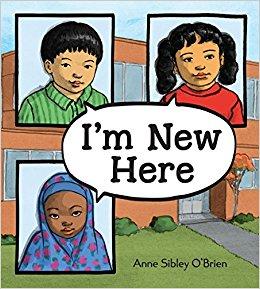
5. Unlike the other books in this list, I'm New Here does not deal specifically with a "refugee story" of fleeing one's home, nor does it actually state that any of the characters introduced here are refugees. But I think it's an important book because it helps to erase the "distance" that often seems to exist between us here in the United States and the refugee stories we read in the news. Regardless of how or why these children arrived in the United States, they are introduced to their new classrooms and set about trying to adjust to a new language and culture in a place where they know no one. While there is little narrative here -- we are mostly given vignettes of each character's experiences interspersed together -- this first-person glimpse into the lives of newly arrived children from Guatemala, Korea, and Somalia can help build empathy as we imagine what it would be like to not understand the words that those around us are saying -- to feel lost, and yet want very much to belong. As time goes on, these struggles give way to confidence for these children.
For more book recommendations relating to refugees, diversity, and other global cultural issues, see the book list (you can browse by theme) at I'm Your Neighbor.
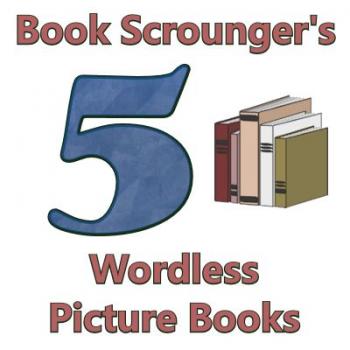
Most picture books use words and illustrations to tell a story -- but some artists are skilled at storytelling without using any words at all. Here are some of our favorites, in no particular order:
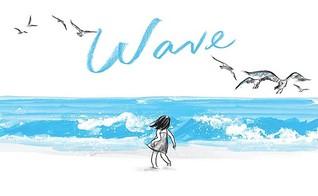
Wave, by Suzy Lee, is a simple book with a long horizontal-rectangle shape, that depicts a little girl interacting with the waves on a seashore. The vibrant blue stands out so well against the black and white, and the exuberance and curiosity is evident on the girl's face as she joyfully watches, kicks, and even taunts the waves. This is a fun book that even young children can "read" to themselves.
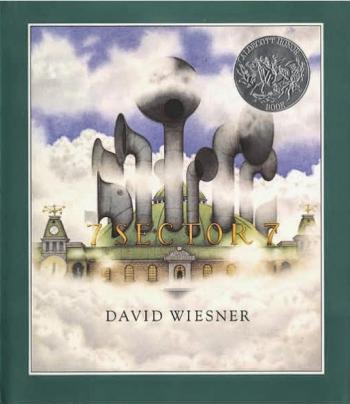
David Wiesner has written and illustrated many imaginative and detailed picture books, and Sector 7 is a wordless fantasy that seems to explore the question: What if clouds were alive? A Caldecott Honor book in 2000, this story follows a boy who goes on a school trip to the Empire State Building, where he meets a friendly cloud who takes him through the air to visit "Sector 7," a giant "assignment station" in the sky where clouds are received and dispatched to various places in various forms. But the clouds are unhappy -- they are stuck making the same boring shapes over and over again -- can the boy help them be more creative? And if he can, what will the "powers that be" think of it?
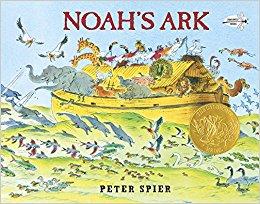
Peter Spier's Noah's Ark won the Caldecott Medal in 1978. Aside from some introductory text, it wordlessly tells the biblical tale of Noah and his floating menagerie. It's fun to see the ways in which he envisions so many animals living together during a flood. By the end of the story, I can really feel the relief and freedom that comes when the ark door opens and everyone is finally free to go their own way.
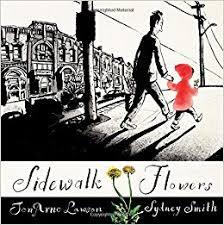
Sidewalk Flowers, by JonArno Lawson, is full of beautiful black-and-white illustrations that gradually gain more color as the story progresses. The images follow a father and daughter out for a walk. The daughter notices little things that her father does not seem to see -- such as flowers growing up through cracks in the sidewalk and other places. It's a celebration of beauty, and of the natural curiosity of a child, as well as her care and compassion for the lonely things that adults have learned to simply pass by.
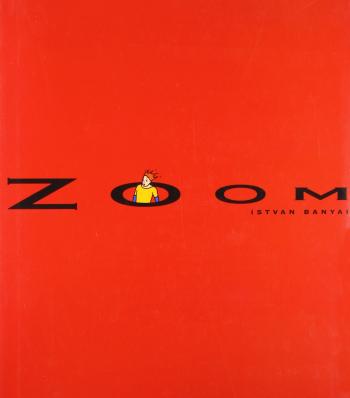
Zoom, by Istvan Banyai, is a clever book that simply shows us one image after another, and each time the frame is zoomed out a bit. After a while, we realize that some of the things that seem to be people are simply photos, or otherwise different than initially thought. By the time it's finished, it's hard to fathom how far away it is from the beginning. Each page contains a blank page on the left, and the image on the right, to keep from spoiling any surprises. This is one of the few books out there that is just as fun to "read" backwards!
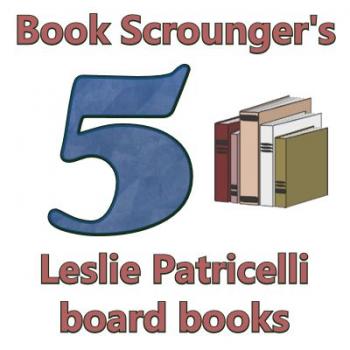
My kids have really enjoyed Leslie Patricelli's bright-colored board books, featuring a smiley, almost-bald baby who experiences holidays, helps demonstrate some simple concepts, and expresses love for some popular baby objects (blankie, binky). I can see why these books appeal to toddlers, with the simple words, exuberant baby, and textured color on the pages. Surprisingly, even my four-year-old enjoyed them, when I thought he was "beyond" these kinds of board books. Here are five of our favorites so far (but there are many!):
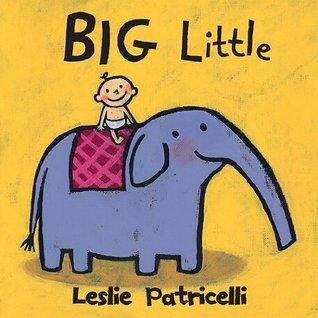
BIG Little compares the sizes of different (often related) things, with the repeated phrase "_____ are big, ______ are little." Things such as heads vs. toes, boats vs. rubber duckies, and ladies vs. ladybugs. At the end is a two-page spread featuring more big things and more little things that a toddler might recognize.
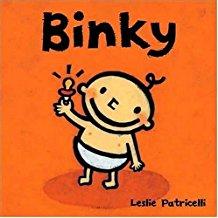
Binky is probably one of the books we've checked out of the library the most. It's a very simple search for a lost binky -- the baby looks in all kinds of places, like in a cereal bowl and under the rug, then begins asking family members before having a meltdown. My toddler gets especially happy when, at the end, the baby finally finds the binky in the crib -- "just where I like it best." Even though my kids never used binkies, they can still identify with the frustrations of losing a special object and not knowing how to find it, so they especially like the happy ending. My daughter has even decided that "Binky" must be the baby's name.
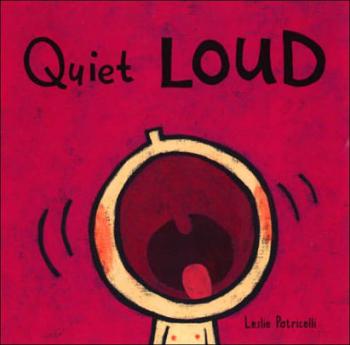
Quiet Loud is a cute comparison of related things that are quiet and loud. It's fun to read the first part in a quiet voice and then raise my voice a bit for the loud comparison. Some examples are "Snow is quiet. Rainstorms are loud." "Birds are quiet. Airplanes are loud." The last two pages contain several more examples on each page of quiet and loud things. The book doesn't make judgments about whether loud things are good or bad, but if I ever do need to ask my kids to do something quiet, this book helps to give them some examples!
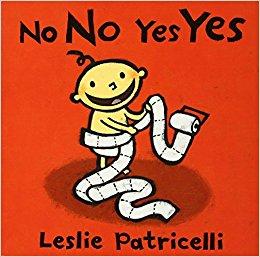
No No Yes Yes is a nice, gentle way to demonstrate things that are not good to do, contrasted with the positive, correct way to do those things. For example, one "no no" is running away from Daddy -- the "yes yes" is holding hands while walking. Another "no no" is dumping water out of the tub, while the "yes yes" shows the baby dumping out water in the tub. The illustrations serve as the explanation -- the only words on the pages are "no no" and "yes yes," but I will usually add some explanations here and there. Sometimes these kinds of books make me worry that they'll introduce bad behaviors that children haven't thought of yet, but this one seemed pretty basic and familiar.
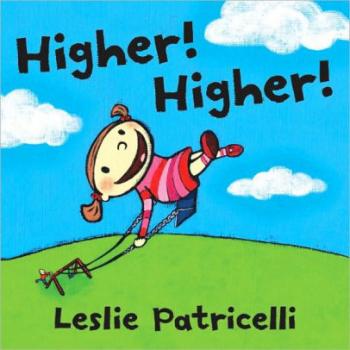
Again with very simple text (primarily just "Higher! Higher!"), this book introduces what appears to be either a new character or an older iteration of the almost-bald baby. The little girl's father is pushing her on the swing, and the higher she goes, the more amazing heights she reaches -- from as high as a giraffe to a skyscraper, and airplane, and even outer space where she meets an unusual creature. Fantastical, but fun. Along a similar vein is Faster! Faster!.


